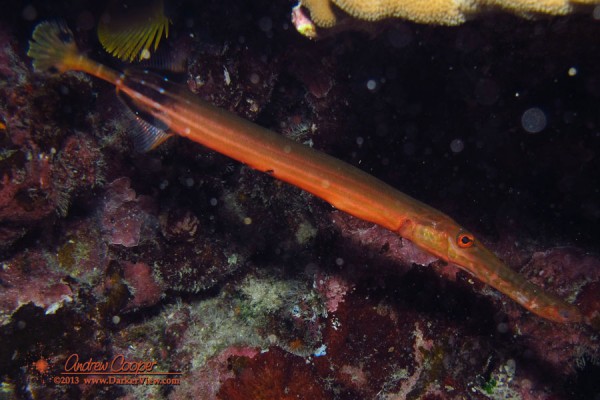
Author: Andrew
NPR Segment on Keck Adaptive Optics
A nice NPR piece on Keck AO today. A decent discussion of the history and advantages of adaptive optics.
For Sharpest Views, Scope The Sky With Quick-Change Mirrors
It used to be that if astronomers wanted to get rid of the blurring effects of the atmosphere, they had to put their telescopes in space. But a technology called adaptive optics has changed all that.
Always a good thing when a system I put so much of my life into receives some good press!

Night Diving under a Supermoon
The term supermoon may be a bit of over-the-top hype, it was still nice to dive under the light of a bright full moon. The plan is simple, meet at 4pm for a late afternoon dive, followed by a night dive. Gear and dinner loaded we quickly slip the lines and head out in a smoothly practiced routine. Where is the boat going, I really do not care, wherever we dive it is going to be good.
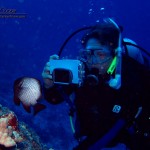
I love the late afternoon light on the reef. As the light dims the shades become more blue. The lower intensity allows me to control the light better, the strobe overpowering the ambient light on the target of interest. The background becomes an attractive blue, open water photos loose the odd green cast that is difficult or impossible to fix in Photoshop. The fish are less flighty as well, beginning to shift from daytime routine to finding a place in the coral for the night.
Full Moon
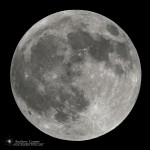
This full Moon will be a perigee full Moon, with the Moon appearing a bit larger and brighter. Today lunar perigee occurs within minutes of full, producing a full moon that is about 12% larger and 30% brighter than if full occurs while the Moon is at apogee.
The Portents of ISON
Comets have long been regarded as omens of extraordinary portent. Novae, eclipses, conjunctions, anything seen in the sky can serve in this role, but bright comets have always held a special awe.
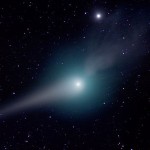
Bright comets are invariably seen as omens by some. History is littered with stories of comets and prophesies. This has not changed, there are many recent examples… Hale-Bopp, Hyakutake, Elenin, each has been used to make all manner of wild predictions. Comet C/2012 S1 ISON certainly fits the role. It will most likely be quite bright, easily visible without optical aid. It may even be visible in the daytime.
Postcard from the Reef – Juvenile Rockmover Wrasse
The juvenile rockmover wrasse, sometimes called a dragon wrasse is a wild appearing fish. With an abundance of frilly appendages it moves like a bit of seaweed caught in the swell. In my experience this fish is always found in an open area, a coral or sand flat between large heads or in wave channels.
While not rare, they are not all that common either. This is another fish that is frustrating to photograph, it moves constantly, never quite letting you get close. The only advantage is that it keeps the same territory, making the same circuit, even when bothered by a large, noisy diver with a strobe.
Not a great shot, the fish is not quite sharp and the lighting is poor. Best I have so far, despite several dragon chases. I’ll just have to try again…

Employment Opprtunity at Keck – Student Assistant Systems Administrator
W. M. Keck Observatory position announcement…
The Observatory seeks a Student Assistant to support the Computer System Administrator on a variety of computer software/hardware oriented assignments.
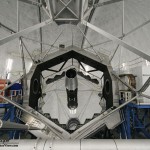
- Hardware and software data entry.
- Windows computer software/hardware configuration/troubleshooting
- Tape organizing.
- Shipping and Receiving support.
- Network Table data entry.
- Assist as primary help desk for Systems Administration group.
- Work effectively with coworkers and others by sharing ideas in a constructive, positive manner; listening to and objectively considering ideas and suggestions from others; keeping commitments; keeping others informed of work progress and issues; addressing problems and issues constructively to find mutually acceptable and practical solutions; and respecting the diversity of the WMKO workforce in actions, words, and deeds.
- Maintain commitment to a high standard of safety, comply with all safety laws and WMKO safety policies/rules, and report actual and potential safety violations to appropriate supervisory or management personnel to further WMKO’s core value of safety.
Continue reading “Employment Opprtunity at Keck – Student Assistant Systems Administrator”
Summer Solstice
Summer solstice occurs today at 19:04HST. Today the Sun will occupy the most northerly position in the sky of the year. The term solstice comes from the latin terms Sol (the Sun) and sistere (to stand still). On this day the Sun seems to stand still as it stops moving northwards each day and begins move to the south. This is the first day of summer as marked by many cultures in the northern hemisphere. Alternately this is the first day of winter for those living south of the equator.
Many calendars will mark Jun 21 as the beginning of summer this year, this is correct for much of the world. Here in Hawaii the solstice will occur on the 20th when correcting for the time zone difference.
| 2013 Solstices and Equinoxes | ||||
|---|---|---|---|---|
| UT | HST | |||
| Perihelion | Jan 2 | 00:59UT | Jan 1 | 14:59HST |
| Spring Equinox | Mar 20 | 11:02UT | Mar 20 | 01:02HST |
| Summer Solstice | Jun 21 | 05:04UT | Jun 20 | 19:04HST |
| Apehelion | Jul 5 | 18:59UT | Jul 5 | 08:59HST |
| Fall Equinox | Sep 22 | 20:44UT | Sep 22 | 10:44HST |
| Winter Solstice | Dec 21 | 17:11UT | Dec 21 | 07:11HST |
| Source: NASA Sky Calendar | ||||
Billion-Pixel View of Mars From Curiosity Rover
A billion-pixel view from the surface of Mars, from NASA’s Mars rover Curiosity, offers armchair explorers a way to examine one part of the Red Planet in great detail.
The first NASA-produced view from the surface of Mars larger than one billion pixels stitches together nearly 900 exposures taken by cameras onboard Curiosity and shows details of the landscape along the rover’s route.
The 1.3-billion-pixel image is available for perusal with pan and zoom tools at: http://mars.nasa.gov/bp1/ and a scaled down version (~159MB) is available for direct download here: http://www.jpl.nasa.gov/spaceimages/details.php?id=PIA16919.

The full-circle scene surrounds the site where Curiosity collected its first scoops of dusty sand at a windblown patch called “Rocknest,” and extends to Mount Sharp on the horizon.
Continue reading “Billion-Pixel View of Mars From Curiosity Rover”
Jupiter at Superior Conjunction
Today Jupiter passes through superior conjunction, passing behind the Sun as seen from our vantage point here on Earth. The planet is currently lost in the Sun’s glare and unobservable, it will reappear in the dawn sky during the first week of July.
